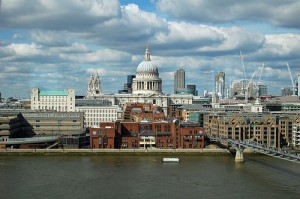 1. I think this logo is mainly just a typeface, and could definitely be adjusted more to represent the collection of the museum. I enjoy the plain, simple font and coloration- but I feel this artistic simplicity could be more representative of the works inside. The vast collection held in this prestigious museum has quite a range, though it contains a lot of classical works. This could be represented in some sort of variation in the logo- whether it is shown with a change in font, color, boldness, etc., it could really begin to portray the vast collection one might find in the museum.
1. I think this logo is mainly just a typeface, and could definitely be adjusted more to represent the collection of the museum. I enjoy the plain, simple font and coloration- but I feel this artistic simplicity could be more representative of the works inside. The vast collection held in this prestigious museum has quite a range, though it contains a lot of classical works. This could be represented in some sort of variation in the logo- whether it is shown with a change in font, color, boldness, etc., it could really begin to portray the vast collection one might find in the museum.2. I've never much understood evaluations of artwork- mainly, I think, because I lack any form of creativity. Van Gogh, however, has always stood out to me as an artist because of how I feel when viewing his work. I absolutely love his color palettes- for example, the happy, yellow color he uses for Sunflowers contrasted with the more relaxed pastel green and purple colors used in the Water Lily Pond and Japanese Bridge piece. The colors, brushstrokes, and subject matter of both pieces fit together like the pieces of a puzzle when viewed and gives an overwhelming sense of the emotion Van Gogh is trying to portray.
 3. It might seem a little cliche- but I would absolutely love to have a work of Van Gogh's in my future London home. :) I think a piece such as Long Grass with Butterflies from 1890 would be absolutely perfect overlooking a peaceful London park. The colors are soft and serene, they would look perfect placed on a light green or light purple wall.
3. It might seem a little cliche- but I would absolutely love to have a work of Van Gogh's in my future London home. :) I think a piece such as Long Grass with Butterflies from 1890 would be absolutely perfect overlooking a peaceful London park. The colors are soft and serene, they would look perfect placed on a light green or light purple wall. 4. I prefer the brighter wall colorings in this particular museum. I feel the type of art work displayed here is more enhanced by the coloration rather than the color being a distraction. The color palette of the walls should be in direct relation to the type of artwork displayed- the Tate Modern houses more modern art which seems to require more of a blank surrounding in order to be able to have full appreciation for the art. However, with the classical art, you can get more of a home-y feel and admiration for the work.
 5. I don't think the use of objects from the collection necessarily diminishes the work of art. I think, in some ways, it does make the work of art seem more common and less original, but at the same time by making some pieces so ubiquitous it actually enhances the effect of viewing the original work of art. I do think some forms of merchandise- such as postcards and posters- are more acceptable than a piece of artwort thrown onto a t-shirt, mainly because in that sense they are still viewed as the art work and not just a pattern on a random object.
5. I don't think the use of objects from the collection necessarily diminishes the work of art. I think, in some ways, it does make the work of art seem more common and less original, but at the same time by making some pieces so ubiquitous it actually enhances the effect of viewing the original work of art. I do think some forms of merchandise- such as postcards and posters- are more acceptable than a piece of artwort thrown onto a t-shirt, mainly because in that sense they are still viewed as the art work and not just a pattern on a random object. 6. I really enjoyed viewing all of Michelangelo's works, mainly because he is so famous and I've learned so much about him not only in art classes but in history classes. A piece such as The Entombment from 1500-1501 is definitely something to appreciate. I would also really like a chance to view Michelangelo's work on the Sistine Chapel in Italy while I am in Europe because I know seeing photos of it doesn't begin to do it justice. I would love to return to The Entombment to view it again because the emotions of the people within the portrait are so overwhelming. This, in combination with the colors, (which seems to be a theme throughout this musem) really portrays the feelings of the painting as well as an important historical scene.











